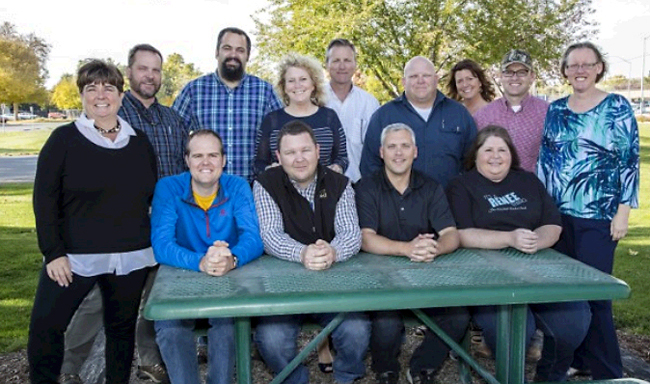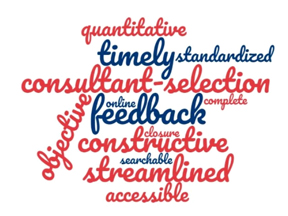

Pictured back row, left to right: Wade Allen, Nathan Herbst, Monica Crider, Damon Allen, Sam Leammon, Julie Muth, Seth Helms, Margaret Pridmore
Front row, left to right: Michelle Doane, Ed "The Fed" Miltner, Odo Grandi, Kerby Kirkham, and Renee Becker
Summit team tackles overhaul of performance evaluations
in consultant contracting
Protecting a significant taxpayer investment in Idaho’s state highways, bridges, and interstates demands top-level performance from our consultants. This heightened performance requirement makes it necessary to review the current consultant-evaluation process and determine how to use the evaluations to ensure that the consultants are delivering what we need for our projects. A team in the recent Leadership Summit was assembled to tackle these issues.
Improving the system could potentially save money, release millions of dollars to be used elsewhere, reduce administrative steps, and would incur only a minimal cost. However, arriving at a solution turned out not to be so simple.
“The problem was much more involved than just figuring out how to use consultant evaluations in the consultant-selection process,” team member Margaret Pridmore explained.
After digging into the process with people from ITD, the Local Highway Technical Assistance Council (LHTAC), and the Federal Highway Administration (FHWA), the team discovered that they needed to change multiple processes.
After a consultant’s scope is completed on a project, the final evaluations were completed inconsistently, and often not at all.
“That’s rather important, because consultant agreements aren’t closed until that final evaluation is turned in, which holds unspent funds in limbo,” Pridmore said. Those funds in limbo turned out to amount to about $24 million — significant resources that could rightly be allocated elsewhere for a more efficient system.
Everything was done manually, as documents would be printed, signed, scanned, and emailed, then printed again, etc., etc.
Evaluations weren’t consistent in other ways, too.
Most consultant evaluations were only done once per project. As such, the evaluations only represented the last portion of a long project, particularly if personnel changes or other adjustments occurred mid-project. The evaluation therefore was not representative of the consultant's performance for the entire agreement and/or project. 
The team ultimately decided to use SharePoint to automate the process. Once the site is fully operational, consultants will be able to submit their progress reports via the new site, agreement administrators will be able to sign off on them there, and they can complete a periodic evaluation associated with the work done during that invoice time period. At the end of the project, the individual evaluations will be considered. The agreement administrator can modify if needed, and then finalize. This ongoing evaluation process will be a collaborative effort with our consultants so they are given timely feedback to course correct if necessary. If consistently submitted, after one year of collecting consultant evaluations, there should be a large enough sample size of evaluations to start using the consultant’s collective evaluation scores as a criteria in the selection process.
The site should be up and running by late winter or early spring, depending on network security testing.
Published 12-15-17